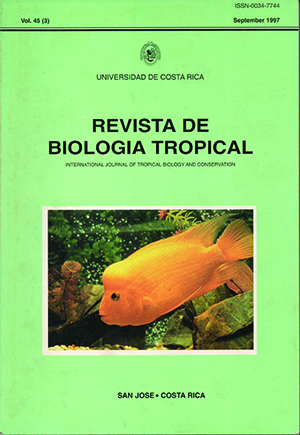Abstract
Thís paper presents information on the abundance and life-history characteristics of two gall-inducing homópteros and a parasitic wasp that occur on Nectandra salicina (Lauraceae). The more common gall replaced the fruíit and contained Trioza sp. (magnoliae grup) (Homoptera: Triozidae). the stem gall contained a Coccoidea sp.(Homoptera). N. salicina were heavily infested w the psyllid gal. t ma raio of galled to normal fit was 6.2: 1. Galls h one to teach, with 2.0 ± 0.1 indívíduals per chamber and 3.0± 0.2 psyllids p gall. Trioza sp. had four instas and at the of colecton 71% of the psyllids were 3rd or 4th it. The galls increased in size a the number and size of the psyllids, and the number of chamber increased. Eigen percent of the,3rd and 4th instar psyllids were parasitized by Metaphycus electra Noyes and Hanson (Hymenoptera: Encyrtidae). Thiry three percent of galls cont 3rd or 4th instar psyllids had one or more parasitoid, and withín these attacked galls 69% of the psyllids were parasitized. The likelihood of a gall being atked by M. electra had less to do with the size of the gall than with the frequency dístrbution of the various ga1l sizes. Similar to the Trioza sp. glls, the size of t Cocoidea galls increased mother matured and the number of offsprng increased.##plugins.facebook.comentarios##

This work is licensed under a Creative Commons Attribution 4.0 International License.
Copyright (c) 1997 Revista de Biología Tropical
Downloads
Download data is not yet available.






